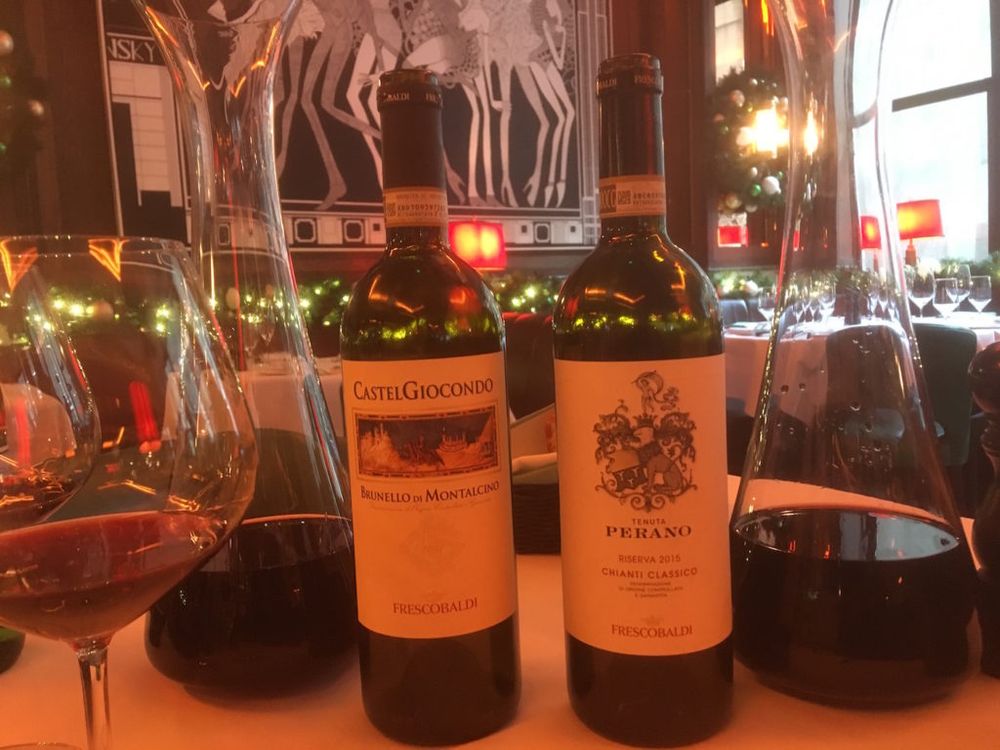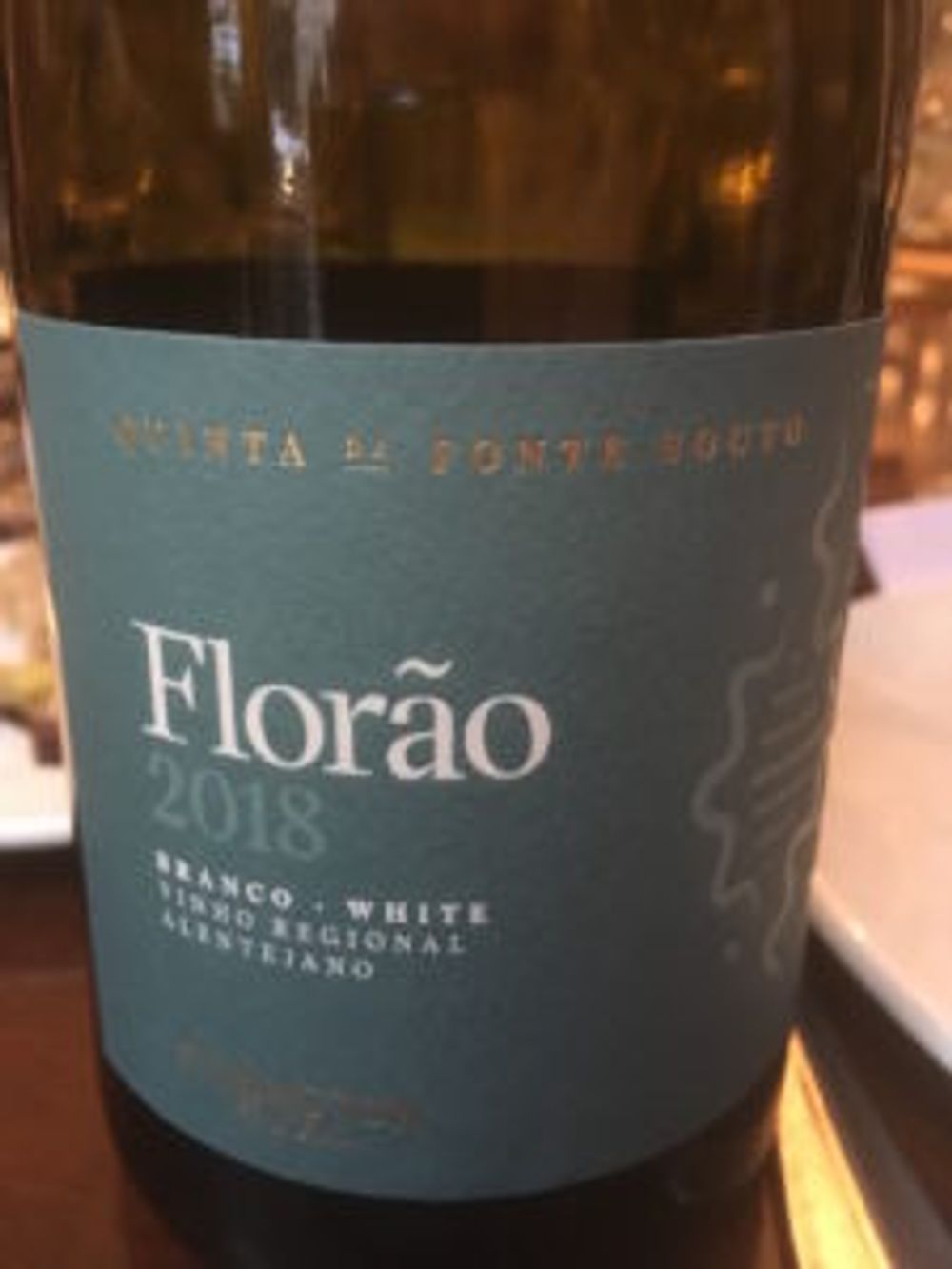Some of the tastings of Justin’s year included Furmint February, Wine Australia’s First Families of Wine tasting in September and the Blue Danube tasting which looked at various aspects of Blaufrankisch.
One of the questions people from outside the trade ask wine writers is simply, how do you do it? How can you taste 60, 80 or 100 wines in a big hall, completely out of context – unless, perhaps the producer is there, which gives you some – and often with no food (which is what wine is supposed to accompany) without getting confused, tired or just fed up with what happens to be in your glass?
Well, although tastings remain the best way for producers to get their wines out to the wider world, these drawbacks are hard to refute. This probably explains why when compiling my Xmas list – which comes in no particular order – I realised that only a handful of the wines in it actually came to my attention via a formal tasting.

My first wine is actually an old favourite, the Frescobaldi Castelgiocondo Brunello di Montalcino 2012. I’ve tried this wine a few times but it never impressed me quite so much as when I tasted it, alongside a range of other Frescobaldi wines, over a delicious steak lunch at the Smith & Wollensky restaurant just off the Strand. Tasting great, especially with this upmarket chain’s wonderful steaks and sides, and proof the house of Frescobaldi is firing on all cylinders. (HN Wines).
My second choice was also tasted alongside food but impressed because the winery that produced it, Quinta Da Fonte Souto, just outside Portalegre, in Alentejo, has only been up and running under its current ownership since March 2017 Yup. Symington Family efficiency means that their first venture outside Douro – after five generations and 135 years – was producing wine just six months later. And great wine too, with the huge Vinha de Souto 2017 – a blend of Alicante Bouschet and Syrah – already taking pride of place as the Quinta’s flagship.

“We wanted to make a statement… a wine that was also emblematic of the region,” says head winemaker Charles Symington. Well, they certainly succeeded; this is a wine which will age gracefully and join the likes of Chryseia as a leading Symington Family Estate wine. However my top 10 choice is actually their entry level red Florao 2017, a local blend with amazing depth, nuance and flavour and remarkable value at around £12. The White Florao is pretty damn good too; this Quinta may be new but it’s clearly going places. (Fells).
The Wine Society is enjoying initial exclusivity with Quinta da Fonte Souto and it is them who I have to thank for my third wine, the Hatzidakis Mavrotragano 2016, the last vintage from Santorini’s late, great Haridimos Hatzidakis. The tiny volume that was made sold out almost immediately and I can see why; this is a haunting take on Santorini’s rare indigenous red grape, the minerality piecing through the red fruit like a spear. This is a variety which needs to be taken more seriously.
Staying in the Greek Islands, I was lucky to pay a flying visit to T_Oinos to taste the wines made by the Greek-French team made in the dramatically rocky vineyards there, and imported here by Berkmann. The wines are small volume, expensive but excellent. They include some delicious small volume Mavrotragano, but my vote for wine four goes to the mineral Clos Stegasta Rare Assyrtiko 2018, Stephane Derencourt’s remarkable take on the variety. Made from the best grapes, this delivers at so many levels, and will evolve wonderfully with age (or it would if there were enough of it to hold back).

2019 was the year in which Xinomavro became my favourite variety and I made it my business to taste as many as possible. For sheer verve, the Wine Society wins the gong for my fifth wine, with the Terra Petra Rapsani 2016, made by Xinomavro master Apostolos Thymiopoulus, the summation of everything that Xinomavro can and should be, at a great price (around £22). Great depth and maturity despite its youth, with rich fruit balanced by good acidity and warm tannins. (Wine Society)
In a year during which I finally took English wine seriously, despite domestic political shenanigans which makes it hard to take anything about this country seriously, Bolney Estate’s Eighteen Acre Rose NV Brut stood out from a pretty fine bunch. A lovely blend, this is a delicious fruit-driven wine that is also well priced and knocks the socks off more expensive, more serious English pinks.
It seems ages ago that I wrote a piece on the Wines of Virginia, during which those nice people at New Horizon Wines sent me some samples. One fell through the cracks, almost literally, finding itself at the back of my wine cellar until I found it a few months ago. The grapes for the Veritas Petit Verdot 2013 are actually grown close to Thomas Jefferson’s house in Monticello, which gives this wine a good story, but the palate was also simply stupendous, the Petit Verdot supported by 20% Merlot to produce a forceful, dark berry fruit and dark cherry wine unlike anything else I have tasted this year. With astonishing wines like this – so different from anything produced on the West Coast – Virginia really needs more of a presence on the UK market. (New Horizon)
At the start of this piece I rather dissed the traditional tasting but I was being unfair; as ever the UK trade had lots of impressive ones, at both generic and importer level, with Berkmann, Bibendum, Enotria, Liberty and HN Wines – to name just a few – all showing great wines, many of them new to the UK, with buyers doing a great job of sourcing good but also more unusual wines to ever more discerning and adventurous customers.
Wines of Hungary was active too, presiding over two of the better tastings of the year – Furmint, at the end of January, to launch Furmint February and in the autumn, an extraordinary, under-attended tasting highlighting central Europe’s Blue Grape, Blaufrankisch/Kekfrankos/Frankovka. Wines eight and nine are taken from each of these.
There were so many great wines at the Furmint tasting that my notebook was overflowing. But as I must go with one, the Úrágya 2017 from Istvan Szepsy, probably takes the crown. A wonderfully rich and nuanced single vineyard wine grown on stony soil, this shows the full range of complex flavours that Hungarian Furmint is capable of. Memorable. (Top Selection).
From the Blue Danube tasting, the Anton Bauer Blaufrankisch Reserve 2013, from Wagram, close to Vienna, is a riposte to those who say this isn’t a variety to be taken seriously – or as a varietal. Made in limited quantities – just 3000 bottles – this was really full-on, with lots of spice, but showing its age well. A surprise from Austria, but a good one. (also Top Selection)
Wine Australia’s First Families of Wine tasting in September – held as part of its Australia Redefined tasting – was a joy, reminding me of why I love Australian wine so much. It was also the occasion I tasted my tenth wine of the year,
Henschke’s Hill of Grace Shiraz 2005, presented by Johann Henschke who said: “2005 really was an exceptional vintage for HOG and this is showing really well, with great balance and suppleness supporting the fruit.” I couldn’t agree more: the sheer balance, elegance and finesse – beauty is not too strong a word – confirmed to me this really must be Australia’s finest wine, bar none. (Enotria&Coe),
So 2019, a dismal year for UK plc and anyone interested in progress or liberal values, was at least another great one for wine. Here’s to a vinous 2020 during which I suspect we’re going to need the stuff more than ever before.










































